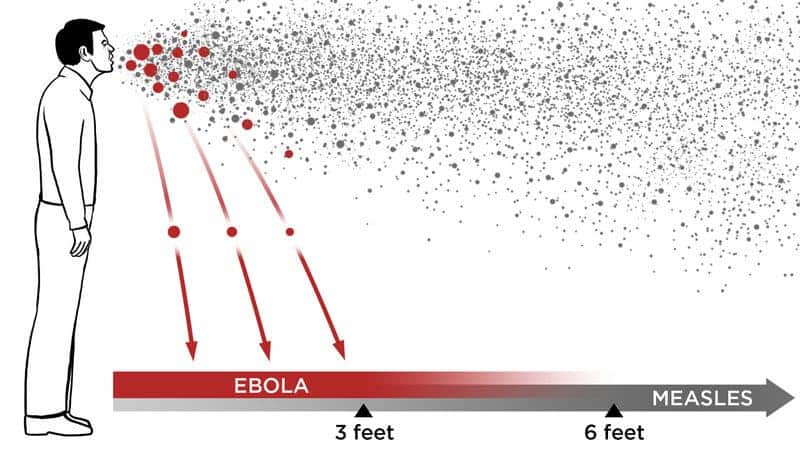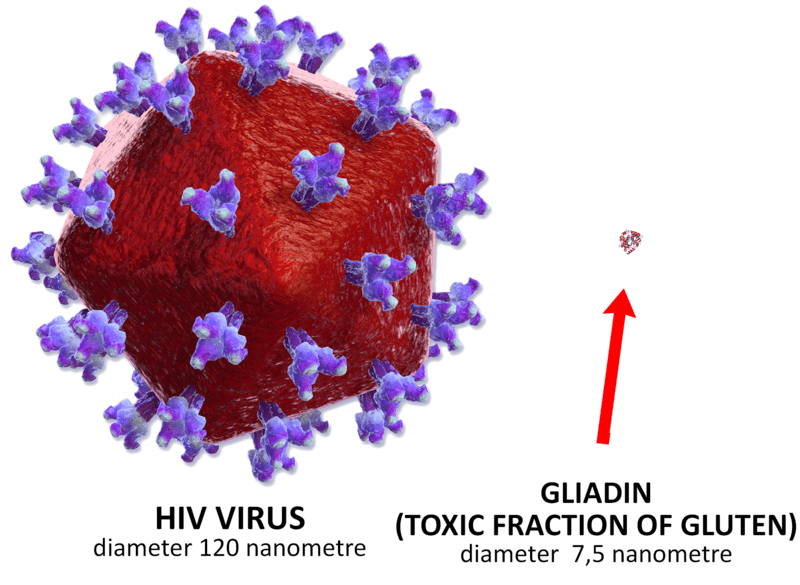
A virus is essentially a tiny piece of genetic material, either made of RNA or DNA. The entire viral particle, known as a virion, consists of this genetic material and an outer shell of protein that encases it called a capsid. Some viruses have a second protective layer known as the envelope.
Viruses are what you’d call obligate parasites, meaning they have to invade foreign cells in order to hijack their biological machinery and replicate. Viruses cannot replicate on their own and without a host, they’re doomed for extinction.
Because they can’t self-replicate like other living cells (among other things), most biologists believe viruses cannot be classed as life forms. Their classification as living beings can get complicated because, at the same time, viruses are subjected to evolutionary pressure just like any living creature.
For instance, viruses can mutate at insanely fast rates, allowing different strains to emerge that are better adapted to infecting hosts, thus begetting more replication.
The smallest of all microbes, viruses are notorious for their contagious behavior. People have generally learned to be afraid of viruses due to their potential to cause illness, from the benign common cold to the frightening Ebola and HIV, or, most recently, the novel coronavirus that has triggered an unprecedented pandemic.
Over thousands of years, viruses have been responsible for killing countless people. The 1918 Spanish flu pandemic killed 50 to 100 million, while 200 million were killed by smallpox during the 20th century alone.
However, not all viruses are necessarily bad. Some have proven instrumental as research tools and as vital components in vaccines and other modern therapies.
How do viruses spread?

The existence of a virus is intertwined with that of its host, but how does it spread?
Depending on the virus, they can infect virtually all types of cells, be they plant, bacterial, or animal cells.
In order to do so, the virus first needs to gain access. The largest organ in the human body, our skin, is a fantastic insulator, protecting our cells and tissues from foreign pathogens. However, it is not foolproof — respiratory passages, such as the mouth and nose, as well as the eyes, allow external particles to enter the body. Open wounds can also act as gateways for viruses, bacteria, and other pathogens.
Once inside the body, the virus cannot reach its infectious potential if it’s not capable of attaching itself to host cell surfaces. To do so, viruses have to be able to recognize and bind to certain receptors on the surface of the cells, like a lock and key. This is why viruses can infect only certain species of hosts and only certain cells within that host.
If the virion can bind to the receptor, it can then immediately inject its genome through the membrane of the cell. Once inside, it instructs the host cell to produce viral proteins through transcription and translation, while halting the synthesis of RNA and proteins that the cell would have used to function properly.
The last stage of viral replication is the release of the new virions produced in the host organism. This usually happens when a cell is exhausted and dies, bursting to release millions of virions that are capable of infecting adjacent cells and repeating the replication cycle.
How viruses cause sickness (and use it to their advantage)

Although cells can get damaged and die due to the viral replication cycle, a person will fall ill and exhibit symptoms of disease mainly as a result of the immune response to the virus. In its attempt to control and purge the virus from the body, the immune system will also attack healthy cells. Sometimes, this can get out of control, resulting in a so-called “cytokine storm”, which in some COVID-19 patients can trigger wide scale damage to virtually all major internal organs.
The shrewd virus will use the host’s sickness to its advantage. For instance, a person that has symptoms of the common cold will have a runny nose and cough, and the respiratory fluids that they expel contain copious amounts of rhinovirus. Most of these viruses expelled through sneezing or coughing will not find a host and die. But eventually, some will meet new hosts, and restart their cycle of viral replication — one host at a time.
Contact between viruses and susceptible hosts can occur through various means.
A virus can stay suspended in the air attached to aerosols, which a person can inhale, thus gaining access to the body. Alternatively, a person might touch a contaminated surface or shake hands with an infected person, only to later touch their mouth, nose, or eyes. Some viruses replicate inside intermediate hosts, such as insects, using them as vectors of transmission. The Zika virus, for instance, is spread by mosquitoes when they bite humans.
The novel coronavirus that caused the COVID-19 pandemic is believed to originate in bats, which can harbor thousands of different viruses without getting sick themselves. Scientists believe that the virus then jumped to other animals, such as the pangolin, which were consumed in wet markets in Wuhan by local people. For this reason, many wildlife organizations are fighting to ban wet markets and the trade of wildlife in order to stave off future pandemics.
How large is a virus?

Viruses are the smallest microorganisms out there, although their size can vary rather wildly. The Porcine Circovius that infects pigs is only 17 nanometers wide, while the hefty Tupanvirus measures 2.3 micrometers, making it almost 1,000 times larger. If these figures don’t make much sense, imagine that the poliovirus, which is 30 nanometers across, is around 10,000 times smaller than a grain of salt.
At this scale, it’s impossible to observe viruses even with modern optical microscopes. It’s no wonder that it took scientists a lot time to confirm their existence.
Towards the end of the 19th century, scientists were well aware that microorganisms could cause disease. However, they mostly knew about bacteria, while the notion of viruses still escaped them.
Science’s incursion into the world of viruses first began when researchers were investigating the tobacco mosaic disease, for which the responsible pathogen couldn’t be identified.
In 1886, German chemist Adolf Mayer crushed diseased tobacco leaves and poured the resulting juice into the veins of healthy tobacco leaves. Sure enough, the leaves later developed the yellowish speckling characteristic of the disease. But despite his best efforts, Mayer couldn’t find the bacteria which he was certain was responsible for the disease.
Six years later, in 1892, Dmitri Ivanovksy, at the time a student in Russia, replicated Mayer’s experiment. However, he introduced an additional step: before injecting the juice into healthy tobacco leaves, Ivanovsky passed the juice through a Chamberland filter. This filter is fine enough to capture bacteria and other known organisms, but even after the sieving, the liquid concoction still caused disease when it encountered tobacco leaves.
Researchers still had no clue what was causing tobacco mosaic disease, but at least now they knew that whatever microorganism was responsible for the disease was smaller than anything they knew.
Dutch scientist Martinus Beijerinck also replicated the experiment, coming to the same results as the German and Russian researchers. However, he had some important insights to share. Beijerinck believed that the cause of tobacco disease wasn’t bacterial in origin, but rather by a “filterable virus”. The word ‘virus’ actually describes ‘poisonous liquids’ in Latin.
It wasn’t until much later, in 1939, that scientists confirmed the existence of the tobacco mosaic virus using an electron microscope — the only scientific instrument capable of imaging objects of such small scale.
Nature needs viruses
There may be at least one million different types of viruses circulating in the world, 320,000 of which might be capable of infecting mammals, a 2013 study found.
That sounds frightening. It means everywhere you look there are thousands of different viruses, some capable of infecting human cells.
However, viruses aren’t inherently bad. Like all things in nature, they exist for a reason. Most viruses cannot infect humans and play important roles in ecosystems, maintaining a balance between various stakeholders, from plants and insects to humans.
If there were no viruses, life as we know it may even collapse.
“If all viruses suddenly disappeared, the world would be a wonderful place for about a day and a half, and then we’d all die – that’s the bottom line,” Tony Goldberg, an epidemiologist at the University of Wisconsin-Madison, told BBC Future. “All the essential things they do in the world far outweigh the bad things.”
This is all very counter-intuitive: viruses sustain life, rather than destroy it.
One way they keep ecosystems in check is by infecting bacteria. Viruses that infect bacteria are called ‘phages’ (from Greek phagein, meaning “to devour”), and we’d all be in deep trouble without them.
Phages are the main regulators of bacterial populations, especially in the ocean. If all viruses somehow magically disappeared overnight, we’d all be overrun by bacteria in a matter of weeks or perhaps even days. Not just humans, but all life on Earth would probably find itself out-competed by bacteria.
And although this isn’t fully understood yet, scientists think that some viruses can give organisms an advantage. For instance, viruses seem to play a role in the process that turns cellulose from grass into milk in cows.
Viruses are truly frightening when they break out on a global scale, unleashing pandemics. From Europe’s Black Death during the Middle Ages to the Spanish flu around the time of the First World War, pandemics have been known to change the course of society. The current COVID-19 is no exception, likely unleashing a new world order.
Pandemics like COVID-19 can shock the economy and medical systems to the point that they can collapse. This is why it’s important we don’t have too many pandemics in the future — and the best way to avoid such scenarios is to protect the natural world.






